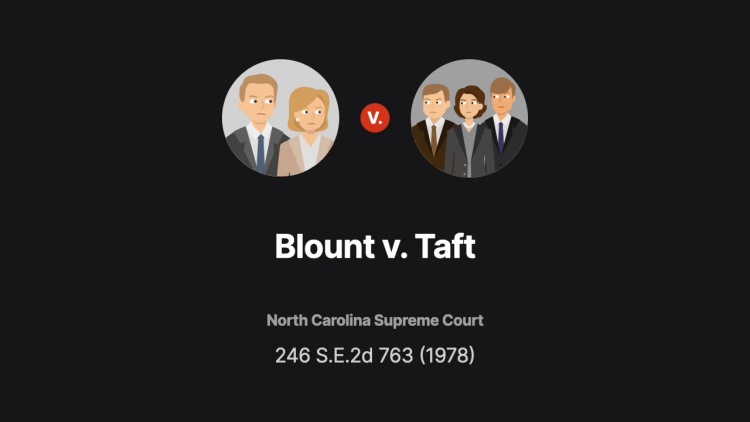Blount v. Taft
North Carolina Supreme Court
295 N.C. 472, 246 S.E.2d 763 (1978)
- Written by John Caddell, JD
Facts
Members of the Blount (plaintiffs), Taft (defendants), and McGowan families all held stock in Eastern Lumber and Supply Company (Eastern), a closely held corporation. The three families held 41, 41, and 18 percent of the shares, respectively. On August 20, 1971, a shareholders and directors meeting was held and the shareholders unanimously adopted a new set of bylaws. Section Seven of the new bylaws provided for the creation of an executive committee consisting of one member of each of the three families. It also provided that full-time employees could only be hired with the unanimous consent of the executive committee. Section Four of the new bylaws stated that the bylaws could be amended or repealed by a majority vote of the directors at any meeting. At a later directors’ meeting on June 20, 1974, the board adopted two new bylaws which were presented by the Taft family and opposed by the Blounts. These amendments deleted the part of § 7 concerning hiring new employees and changed the rest to state that the executive committee could consist of only two directors. The Tafts argued that the amendments were necessary because the Blounts were obstructing the normal conduct of corporate business. The new provisions passed by a five to three margin. Members of the Blount family sued the Tafts, arguing that § 7 of the August 1971 bylaws was a shareholders’ agreement and seeking specific enforcement. The trial court granted specific performance. It ruled that § 7 was a shareholders’ agreement and was therefore binding for up to 10 years unless amended or repealed by all of the shareholders. The appellate court reversed, finding that no shareholders’ agreement existed. The Blounts appealed to the Supreme Court.
Rule of Law
Issue
Holding and Reasoning (Sharp, C. J.)
What to do next…
Here's why 899,000 law students have relied on our case briefs:
- Written by law professors and practitioners, not other law students. 47,000 briefs, keyed to 994 casebooks. Top-notch customer support.
- The right amount of information, includes the facts, issues, rule of law, holding and reasoning, and any concurrences and dissents.
- Access in your classes, works on your mobile and tablet. Massive library of related video lessons and high quality multiple-choice questions.
- Easy to use, uniform format for every case brief. Written in plain English, not in legalese. Our briefs summarize and simplify; they don’t just repeat the court’s language.





